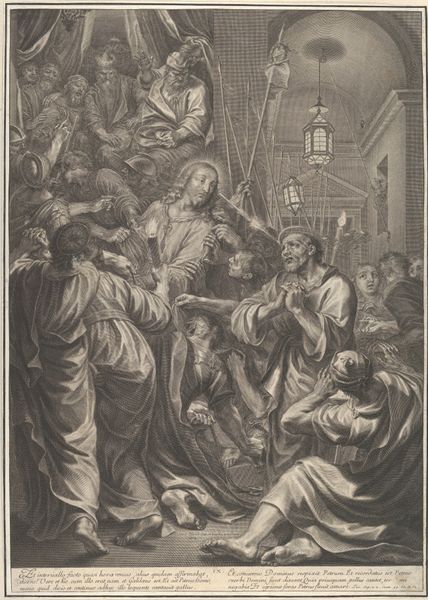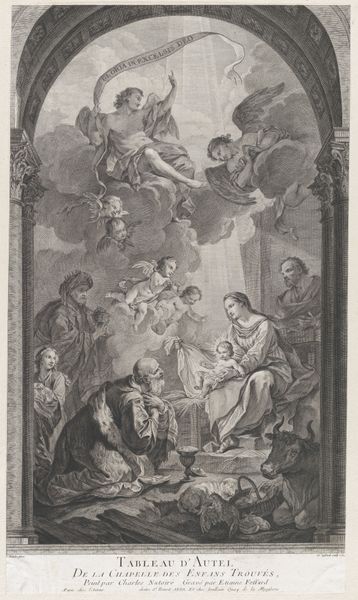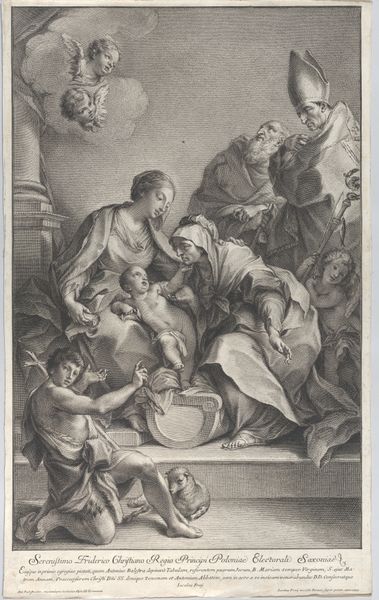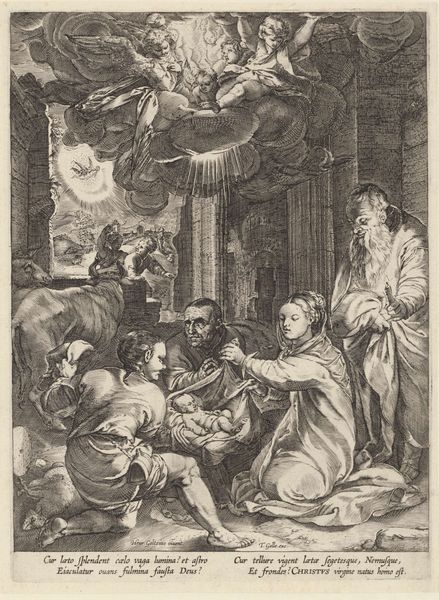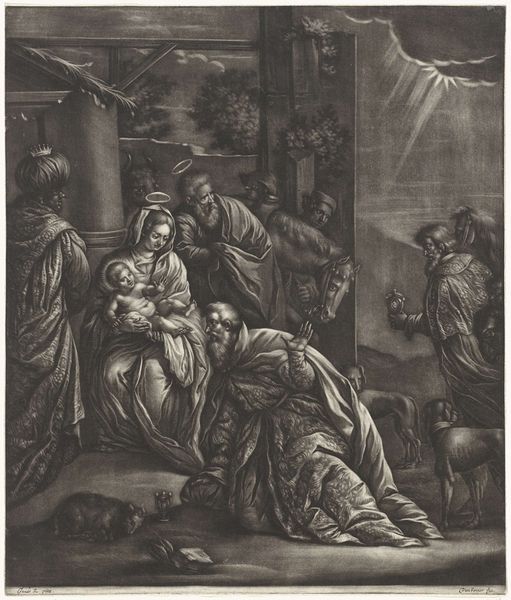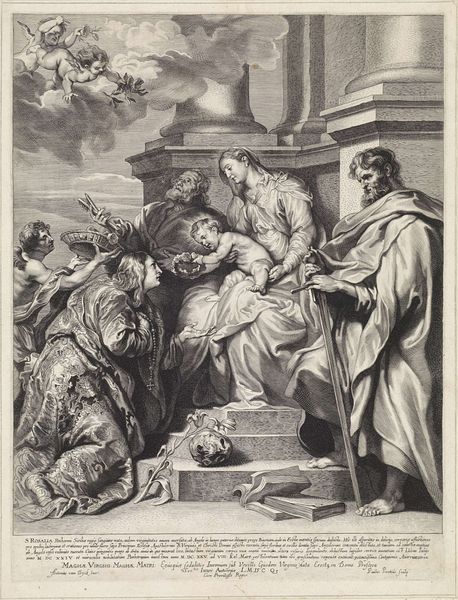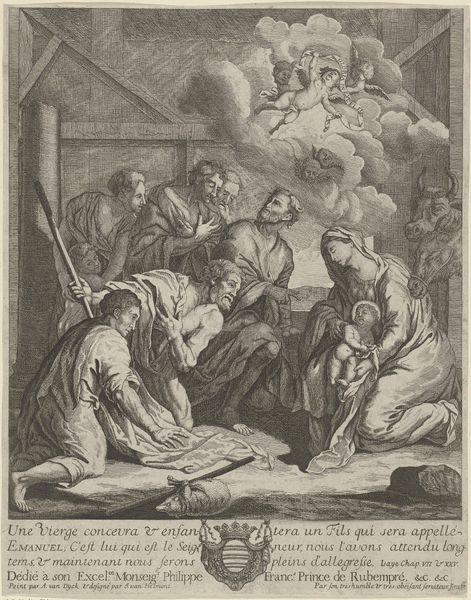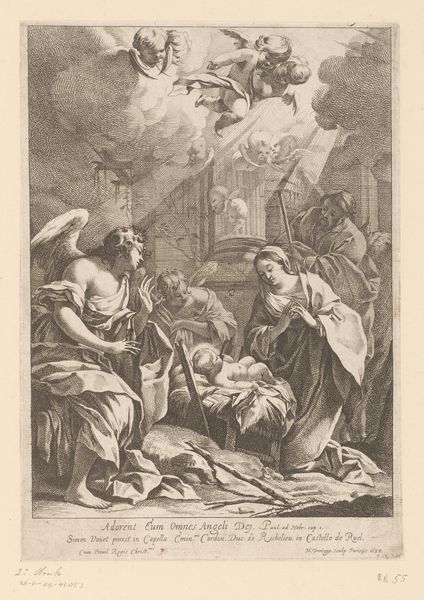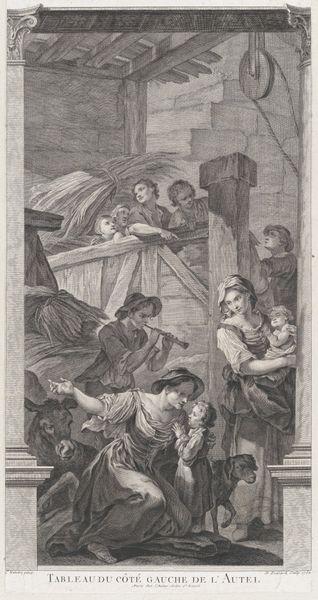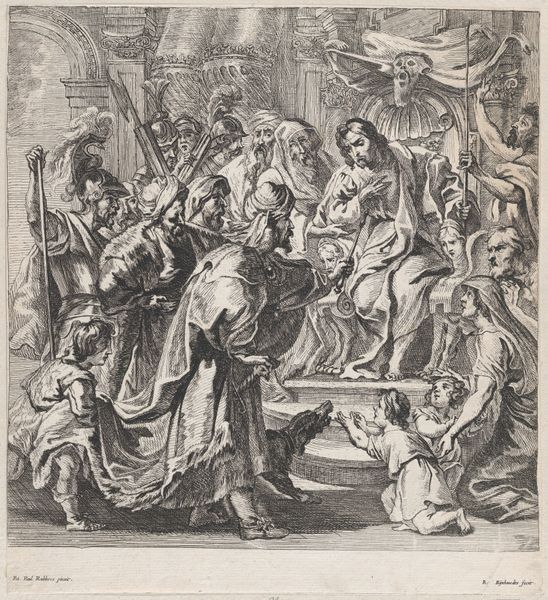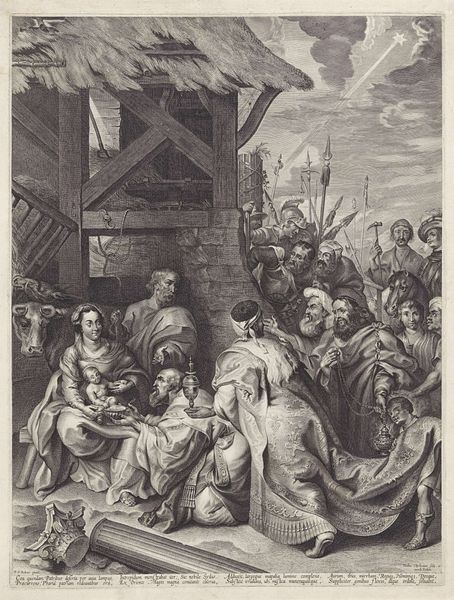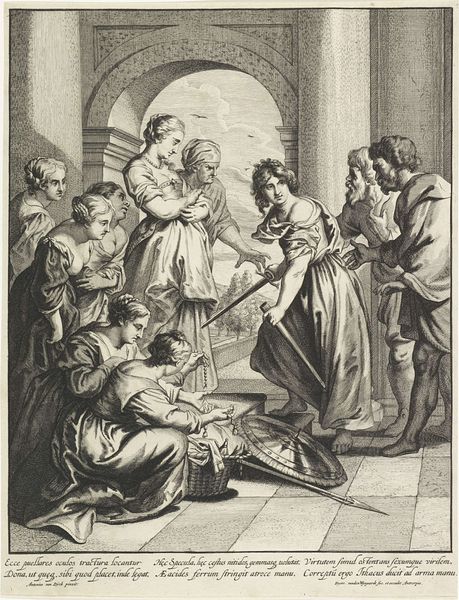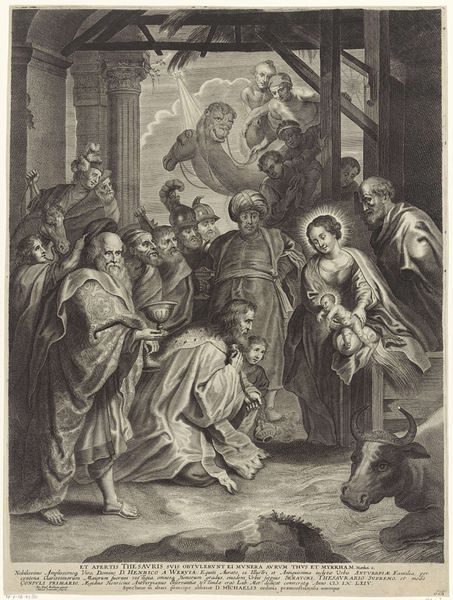
drawing, print, engraving
#
drawing
#
baroque
# print
#
figuration
#
madonna
#
charcoal art
#
child
#
pencil drawing
#
men
#
history-painting
#
engraving
#
angel
Dimensions: Sheet (Trimmed): 18 11/16 × 12 15/16 in. (47.4 × 32.9 cm)
Copyright: Public Domain
Curator: Let's delve into "The Adoration of the Kings," an engraving from 1638 by Jan Witdoeck, currently housed at the Metropolitan Museum of Art. My first thought is the scene is positively bursting with figures, quite dramatic and intense, don't you think? Editor: It’s all about labor here. The physical act of production involved in an engraving is intensive—the craftsman carefully cuts lines into the metal, gradually building tone and detail. It speaks to the skilled workshops where these images were manufactured for wide circulation. Curator: Absolutely. And, thinking about the historical moment, consider the power dynamics inherent in this imagery. The humble, holy family receiving homage from kings…It reinforces established social hierarchies even as it seemingly elevates spiritual authority. Editor: See how Witdoeck manipulates the burin to capture different textures? The rough-hewn wood of the stable against the smooth, rich fabrics worn by the Magi. The contrasting materiality reinforces that power dynamic. What materials do the kings have? How did they obtain them? Curator: Those fabrics and treasures signify the wealth and privilege brought before the Madonna and Child, wealth obtained and used for what end, historically? A troubling notion when you reflect on colonialism and conquest. Editor: True. And those luxurious garments were created through specialized labor. Silks and dyes came from global trade networks. The artwork hints at unseen systems of labor behind that image of devout wealth and that wealth in front of the mother and child. Curator: Yes, you see the way resources get funnelled and funnelled! This rendering presents such a potent allegory for its time. A world built upon faith, authority, and nascent capitalist ventures. Editor: Look closely. These printed images made art accessible to broader audiences than just wealthy patrons. Cheap print equals wider political or religious influence! How many homes contained a print such as this one? Curator: It's a compelling point about dissemination of both propaganda and faith, mass distribution serving dominant ideological ends… A narrative both aesthetic and insidious. Editor: Ultimately, a small object made by laborious means embodies immense social and material forces. Curator: An embodiment that lingers in the social consciousness still. Editor: Worth pondering, for sure.
Comments
No comments
Be the first to comment and join the conversation on the ultimate creative platform.
